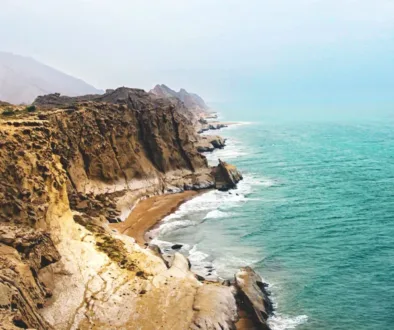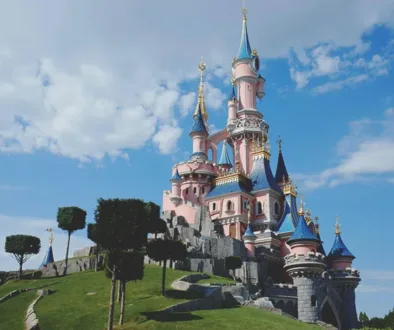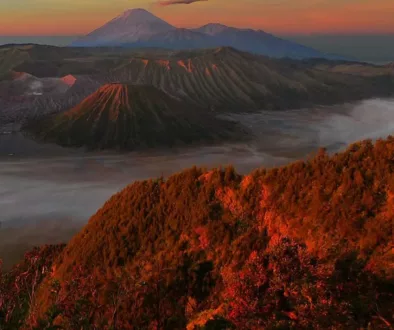How to explore Transylvania – A Travel Guide
Transylvania, a land of legends and breathtaking landscapes! Nestled in the heart of Romania, Transylvania beckons travelers with its medieval charm, mysterious castles, and awe-inspiring natural beauty. In this unique travel guide, we will take you on a step-by-step journey through Transylvania, sharing insider tips, must-see attractions, and immersive experiences. From ancient citadels to picturesque villages, let’s unravel the magic of Transylvania, one step at a time.
Destinations / Romania
July 2023
Plan Your Trip
Choose Your Base: Select a central location like Brasov or Cluj-Napoca as your base for exploring Transylvania. These cities offer excellent transportation connections and a range of accommodations.
Determine Duration: Decide how long you will spend in Transylvania to ensure you have enough time to cover your desired destinations. A week is a good starting point to explore the region thoroughly.
Research about Attractions: Make a list of must-see places, including famous castles like Bran Castle (associated with the legend of Dracula), fortified churches in villages like Viscri or Biertan, and natural wonders like the Transfagarasan Highway or the Piatra Craiului National Park.

Best time to visit
Transylvania is beautiful year-round, but each season offers a unique experience. Summer (June to August) offers pleasant weather, lush greenery, and vibrant festivals, while winter (December to February) provides a fairytale-like atmosphere with snowy landscapes and Christmas markets.
Getting to Transylvania
Travel By Air: Most travelers fly into Bucharest, Romania’s capital, which has an international airport. From Bucharest, you can take a domestic flight or train to your chosen base in Transylvania.
Some cities in Transylvania, like Cluj-Napoca and Sibiu, have international airports with direct flights from major European cities. Check for flight availability and choose the airport closest to your desired destination.
Train Travel: Romania has an extensive rail network, and trains are a convenient and scenic way to reach Transylvania from various European cities. Bucharest is a major rail hub, offering connections to cities like Brasov, Sibiu, and Cluj-Napoca.

Getting around Transylvania
Public Transportation: Major cities and towns are connected by a vast network of buses and trains in Transylvania. For short distances, buses are a best options and a common kind of transportation. Trains, on the other hand, are great for longer trips and provide beautiful views of the surrounding area.
Guided Tours: Joining guided tours is a great way to explore Transylvania’s highlights with the assistance of knowledgeable guides. These tours often include transportation and provide valuable insights into the region’s history and culture.
Adventure Guide to Travel Transylvania
Bran Castle: Start your Transylvanian adventure with the iconic Bran Castle, perched on a hilltop and often associated with the legend of Dracula. Explore its rooms and towers, and learn about the fascinating history of the region.
Sighisoara Citadel: Visit the enchanting birthplace of Vlad the Impaler, also known as Dracula. Explore the well-preserved medieval citadel with its cobblestone streets, colorful houses, and climb the Clock Tower for panoramic views of the city.
Peles Castle: Marvel at the fairytale-like Peles Castle in Sinaia, nestled in the picturesque Carpathian Mountains. Admire its stunning architecture, lavish interior, and the beautiful surrounding landscapes.

Biertan Fortified Church: Discover the UNESCO-listed fortified church in Biertan, a remarkable example of Transylvanian Saxon architecture. Explore its intricate details and panoramic views from the church tower.
Transfagarasan Highway: Embark on a scenic drive along one of the most spectacular mountain roads in the world, offering breathtaking views and access to Balea Lake. Marvel at the engineering marvels and stop at various viewpoints along the way.
Culture and Cuisine
Villages: Immerse yourself in rural Transylvania by visiting picturesque villages like Viscri, Rimetea, or Crit. Experience the traditional way of life, admire well-preserved architecture, and interact with locals.
Try Local Delicacies: Sample Transylvanian specialties like sarmale (cabbage rolls filled with meat and rice), mici (grilled minced meat rolls), ciorba de burta (tripe soup), and palinca (fruit brandy) for an authentic culinary experience. Visit local restaurants or join food tours to savor the flavors of the region.
Folklore and Crafts: Attend a traditional folk dance performance or visit local artisans to learn about traditional crafts such as pottery, wood carving, or weaving. Explore craft shops and markets to purchase unique souvenirs.

Adventures in Transylvania
Bucegi Mountains: Hike through the stunning Bucegi Mountains, home to unique rock formations, crystal-clear streams, and breathtaking landscapes. Explore trails like the Seven Ladders Canyon or reach the iconic Sphinx and Babele formations.
Piatra Craiului National Park: Venture into the dramatic Carpathian scenery of Piatra Craiului National Park. Hike along the ridge trail for panoramic views, spot wildlife like chamois or bears (with a guide), and experience the untouched beauty of the Carpathians.
Bear Watching: Join a guided tour to observe the majestic brown bears in their natural habitat. The Zarnesti Bear Sanctuary offers an opportunity to learn about bear conservation and see rescued bears.

Travel Tips for Transylvania
Local Currency: The official currency in Romania is the Romanian Leu (RON). While credit cards are widely accepted in tourist areas, it’s advisable to carry some cash for smaller establishments and local markets.
Language: Romanian is the official language in Transylvania. Learn a few basic phrases or carry a translation app to communicate with locals. English is spoken in tourist areas, but knowledge of some local phrases can go a long way.
Respect Local Customs: Embrace the local culture and customs by respecting religious sites, local traditions, and dress codes, especially when visiting monasteries or churches.
Safety Precautions: Transylvania is generally safe for travelers, but it’s always wise to take precautions. Take care of your things, When in public place or in crowded areas and always keep an eye around your stuff.
Contact information
Transylvania is well-equipped with visitor centers that provide helpful information, maps, and guidance to enhance your travel experience. Here are a few key visitor centers and their contact details:
Brasov Tourist Information Center
Location: Piata Sfatului 30, Brasov
Phone: +40 268 477 793
Website: www.brasovtourism.com
Cluj-Napoca Tourist Information Center
Location: Unirii Square 5, Cluj-Napoca
Phone: +40 264 592 356
Website: www.visitclujnapoca.ro/en
National Tourism Authority of Romania
Website: www.romaniatourism.com
Romanian Ministry of Tourism
Website: mturism.ro/en
Phone: +40 372 111 999
Transylvania travel guide offers a captivating blend of history, folklore, natural wonders, and warm hospitality that will leave you spellbound. By following this step-by-step guide, you can embark on an unforgettable journey through this mystical region.
Whether you’re exploring medieval castles, immersing yourself in local culture, embarking on outdoor adventures, or savoring traditional cuisine, Transylvania promises an experience that will stay with you long after you leave.
So, pack your bags, and keep your travel guide along to embrace the allure of Transylvania, and let its stories and landscapes unfold before you. Your Transylvanian adventure awaits!



